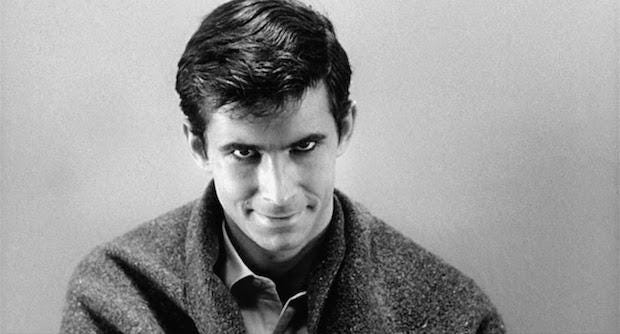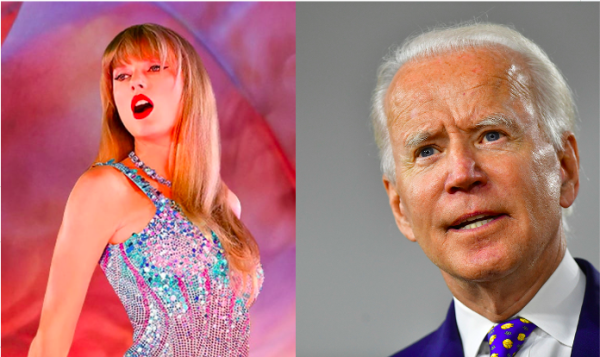It’s Not About the Dress: A Brief History of Transphobia in Horror Movies
CSI: Crime Scene Investigation, season two, episode thirteen. While hunting a serial killer, the investigative team stumbles on an odd piece of the killer’s past. In a dramatic twist, it’s revealed that Paul Millander was born Paulina Millander. He only transitioned after his father’s murder, believing a man would have been able to save him.
It was the first time I saw a transgender man on screen, and he was a calculated killer.
CSI isn’t a horror movie, but it does feature one of the genre’s favorite cliches; the crazy trans murderer.
(The movies in this article use outdated terms like “transvestite” and “transsexual.” Today, these words are considered offensive, and the correct term to use is transgender.)
The psychotic trans killer trope shows up again and again in horror movies, starting as early as the 1930s. In some ways, CSI subverts this cliche by featuring a transgender man as the killer, rather than a woman. The vast majority of transphobia in horror movies targets trans women, the most famous examples being Psycho (1960) and The Silence of the Lambs (1991). Norman Bates wearing a dress and wig while wielding an ax, and Buffalo Bill dancing in makeup in front of his mirror have been cemented in the public’s imagination.
Fans of these movies argue that neither of the antagonists are actually trans. Norman Bates is severely mentally ill and has two “personalities,” one being his dead mother.
And in The Silence of the Lambs, Hannibal Lector explicitly states that the film’s serial killer, Buffalo Bill, “…is not a real transsexual, but he thinks he is, he tries to be.”
However, most trans people agree that it doesn’t matter whether the villain is explicitly trans or not because these movies still reinforce the idea that the blurring of gender roles is something evil.
The most horrific examples of this trope that I saw were Dressed to Kill (1980) and Sleepaway Camp (1983). In both movies, there is no subtlety. The villains are trans and they kill because of their gender identity.
In Dressed to Kill, our transgender antagonist, Bobbi, runs around in a blonde wig stabbing unsuspecting cisgender women. According to the movie’s less-than-scientific explanation for her behavior, she suffers from a split personality disorder. Bobbi wants to transition, but her male counterpart, Dr. Robert, won’t allow it. So Bobbi kills any woman that she is attracted to as a form of revenge.
Sleepaway Camp isn’t any better. In a somewhat common sub-trope, the main villain is Peter, who was raised as his sister Angela after she died. “Angela” enacts her own twisted sense of justice at the camp, killing fellow kids who bully and ridicule her. In the final scene, we see Angela, naked and bloody, holding the severed head of a fellow camper. And yet the protagonists seem to be more horrified by her genitalia than the murder she just committed.
In both of these movies, the antagonists being trans is a twist. The audience is supposed to be shocked and horrified that these “men” have been parading around in dresses for the majority of the film without our knowledge.
So why do these films matter? Media, and especially horror, is often a reflection of society’s fears at the time. These aren’t harmless movies that we can look back on simply to cringe at; these are very real and very damaging. Not only do these tropes negatively affect transgender individuals, but it affects people’s perception of trans people. In America, trans adults make up less than 1% of the overall population. This means that the majority of Americans have probably never met a trans person in real life. So when the only image a person gets of a trans person is a psychotic killer, it’s easy for them to form a negative opinion.
Are horror movies solely to blame for the recent wave of anti-trans legislation, or the rate of hate crimes against transgender people? No, of course not. But they have certainly contributed to enduring prejudice against gender non-conforming people.
Recently, movies like Assasination Nation (2018) and Bit (2019) have attempted to change the narrative by featuring trans women as protagonists, literally and figuratively fighting back against transphobia.
But these are just two movies, compared to the countless transphobic ones that have already been made. We need more.
We need to uplift and support trans people, both in front of and behind the camera. We need movies that feature trans men and non-binary people. We need movies with trans people of color. We need movies where transphobes are the villains instead of the heroes.
Most of all, we need more horror movies where trans people get to exist. Films where our bodies are not a political statement and where we can fight against evil entities without our gender being the focal point. Because everyone deserves a movie where they can see someone that looks like them killing a hoard of zombies.
Hi! My name is Cameron and I'm a senior. This is my third year writing for Wildezine and my second year as an editor. I'm mainly interested in how pop...







Joseph Lee Falk • Apr 26, 2021 at 2:45 pm
Wow. As a person who watches CSI and Law&Order dramas/spin-offs regularly, it is now clearer from this article ‘WHY ‘ TV and movie characterizations matter. Congratulations to the author. Well written. Thought provoking. Convincing. Worth the read. Joe
Judith Richard • Apr 26, 2021 at 11:26 am
Intelligently and beautifully written.
Congrats
Eduardo Polón • Apr 26, 2021 at 9:52 am
Thank you, Cam, for this insightful article! I found it very interesting and educational, and truly appreciate the valuable opportunity to learn that it afforded me.